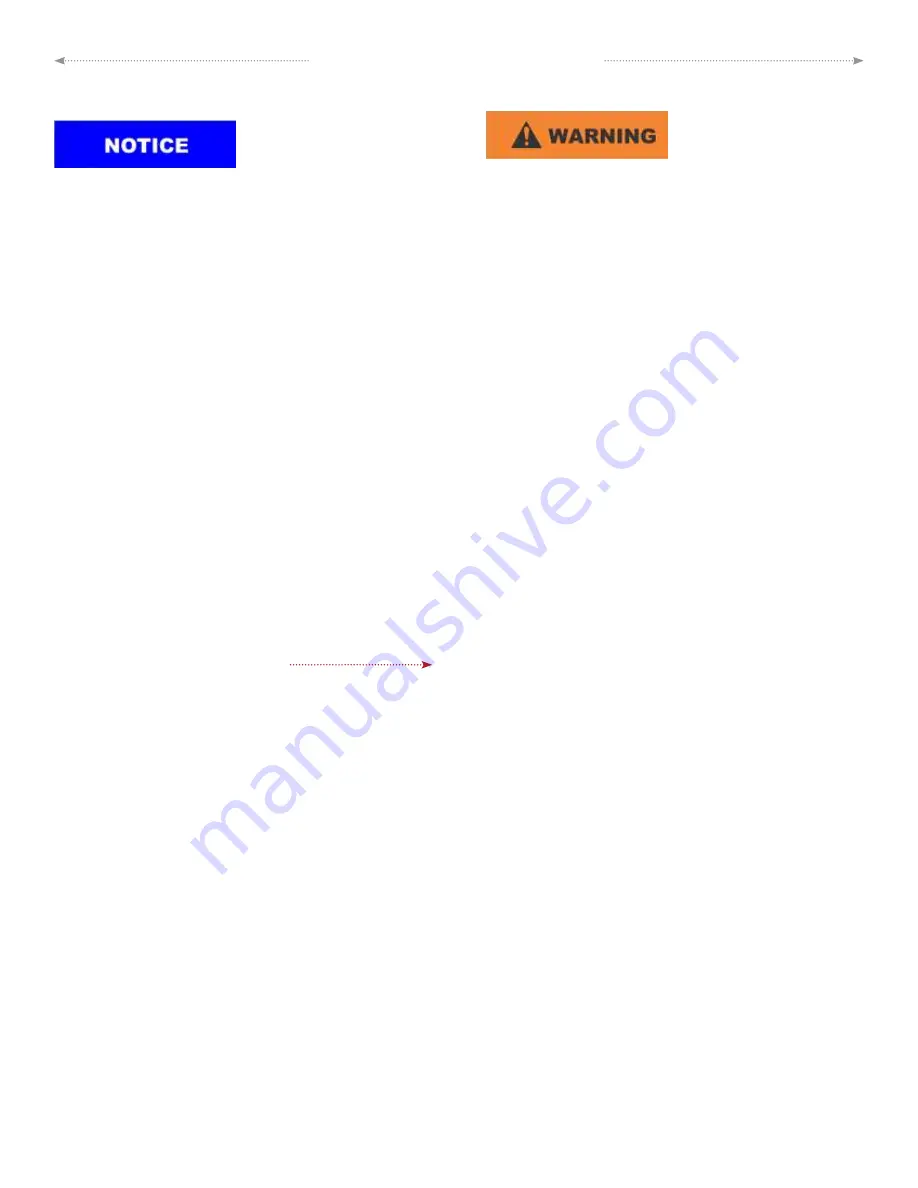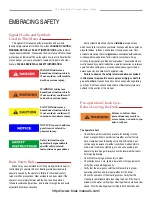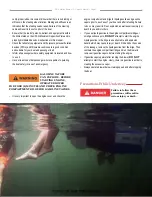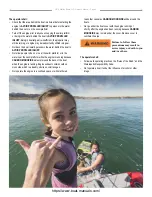
Weeds can sometimes be
removed by shifting to
NEUTRAL, pausing for a
moment, then shifting to
REVERSE to unwind the weeds from the propeller.
Dam Spillways
The area around dam spillways is very hazardous and conditions
can change rapidly. Keep clear of the spillways and areas below
dams. Currents created by spillways can draw in objects, including
your boat.
Restricted Areas
Before boating, check with Local, State, and Federal authorities
to identify restricted areas. Because of the threat of terrorism, the
U.S. Coast Guard has and will continue to implement strict limits on
watercraft near U.S. Navy and Coast Guard ships and other potential
targets.
Weather/Seas
Learn and understand weather patterns and signs of change.
Bad weather can cause an uncomfortable and unsafe situation. If
a storm approaches, seek a safe harbor. Check forecasts before
getting underway and continue to monitor conditions while on the
water.
Environmental Concerns
As a boater, you already appreciate nature’s beauty and the
peace of the great outdoors. It is a boater’s responsibility to protect
the natural environment by keeping waterways clean.
Foreign Species
If you trailer your boat from lake to lake, you have the potential
of unknowingly introducing a foreign aquatic species from one lake
to the next. It is important to thoroughly clean the bottom of the
boat below the water line, remove all weeds and algae, and drain
the bilge, ballast, and livewells before launching the boat in a new
body of water. Check local, state, country agencies as to laws and
regulations.
Fuel/Oil Spillage
The spilling of fuel or oil into our waterways contaminates the
environment and is dangerous to wildlife.
DO NOT EVER
discharge
or dispose of fuel, oil or other chemicals into the water; it is prohibited
and can result in fines. These are three common, accidental types of
discharge:
• During initial fueling of a nearly empty tank
• Overfilling the fuel tanks
• Pumping contaminated bilge water
Fumes from rags can collect
in the bilge and pose an
extremely hazardous fire and
explosion risk, which can
result in injury or death. Never store rags used to wipe up
fuel or solvent spills in the boat. Dispose of rags properly
ashore.
Discharge/Disposal of Waste
Waste means all forms of garbage, plastics, recyclables, food,
wood, detergents, sewerage and even fish parts in certain waters – in
short, nearly everything. We recommend you bring back everything
you take out with you for proper disposal ashore.
Excessive Noise
Noise means engine noise, radio noise, loud conversation, or
even yelling. Many bodies of water have adopted noise limits. Noise
can carry a considerable distance on water, especially at night. Be
sure to follow regulations and be courteous.
Speed/ Wake/Wash
Be alert for
NO WAKE
zones. You are responsible for any
damage or injury caused by your wake/wash. Prior to entering a
NO WAKE
zone, reduce throttle, come off plane to the slowest
steerable speed. Use caution when operating around smaller crafts,
in channels and marinas, and in congested areas.
Some states and boating areas have imposed speed limits for
the operation of boats, including, but not limited to, no-wake zones.
Check local, state, and federal agencies as to laws and regulations.
The U.S. Coast Guard and local boating authorities are excellent
sources for this information, which can include penalties for failure to
observe the requirements.
Exhaust Emissions
Increased exhaust (hydrocarbon) emissions pollute our water
and air. Keep your engine tuned and boat hull clean for peak
performance. Consult your Malibu dealer for information.
Paints
If your boat is kept in water where marine growth is a problem,
the use of anti-fouling paint may reduce the growth rate. Be aware of
environmental regulations that may govern your paint choice. Contact
your local boating authorities for information.
Cleaning Agents
Household cleaners should be used sparingly and not discharged
into waterways. Never mix cleaners and be sure to use plenty of
ventilation in enclosed areas while cleaning your boat.
DO NOT
use products which contain phosphates, chlorine, solvents, non-
biodegradable or petroleum based products. Refer to the
Care and
Maintenance
section in this manual for more information.
2019 Malibu Boats, LLC Owner’s Manual • Page 18
https://www.boat-manuals.com/
Summary of Contents for Wakesetter 20VTX 2019
Page 1: ...https www boat manuals com...
Page 3: ...https www boat manuals com...
Page 6: ...https www boat manuals com...
Page 15: ...s a f e t y s a f e t y https www boat manuals com...
Page 16: ...https www boat manuals com...
Page 50: ...https www boat manuals com...
Page 73: ...https www boat manuals com...
Page 108: ...2019 Malibu Boats LLC Owner s Manual Page 95 https www boat manuals com...
Page 124: ...https www boat manuals com...
Page 125: ...h o w i t w o r k s h o w i t w o r k s https www boat manuals com...
Page 126: ...https www boat manuals com...
Page 154: ...2019 Malibu Boats LLC Owner s Manual Page 141 https www boat manuals com...
Page 155: ...t r a i l e r s t r a i l e r s https www boat manuals com...
Page 156: ...https www boat manuals com...
Page 171: ...https www boat manuals com...
Page 172: ...g e t r e a dy g e t r e a dy https www boat manuals com...
Page 180: ...2019 Malibu Boats LLC Owner s Manual Page 167 https www boat manuals com...
Page 182: ...https www boat manuals com...
Page 209: ...w a r r a n t y w a r r a n t y https www boat manuals com...
Page 210: ...https www boat manuals com...
Page 234: ...https www boat manuals com...
Page 235: ...https www boat manuals com...













































